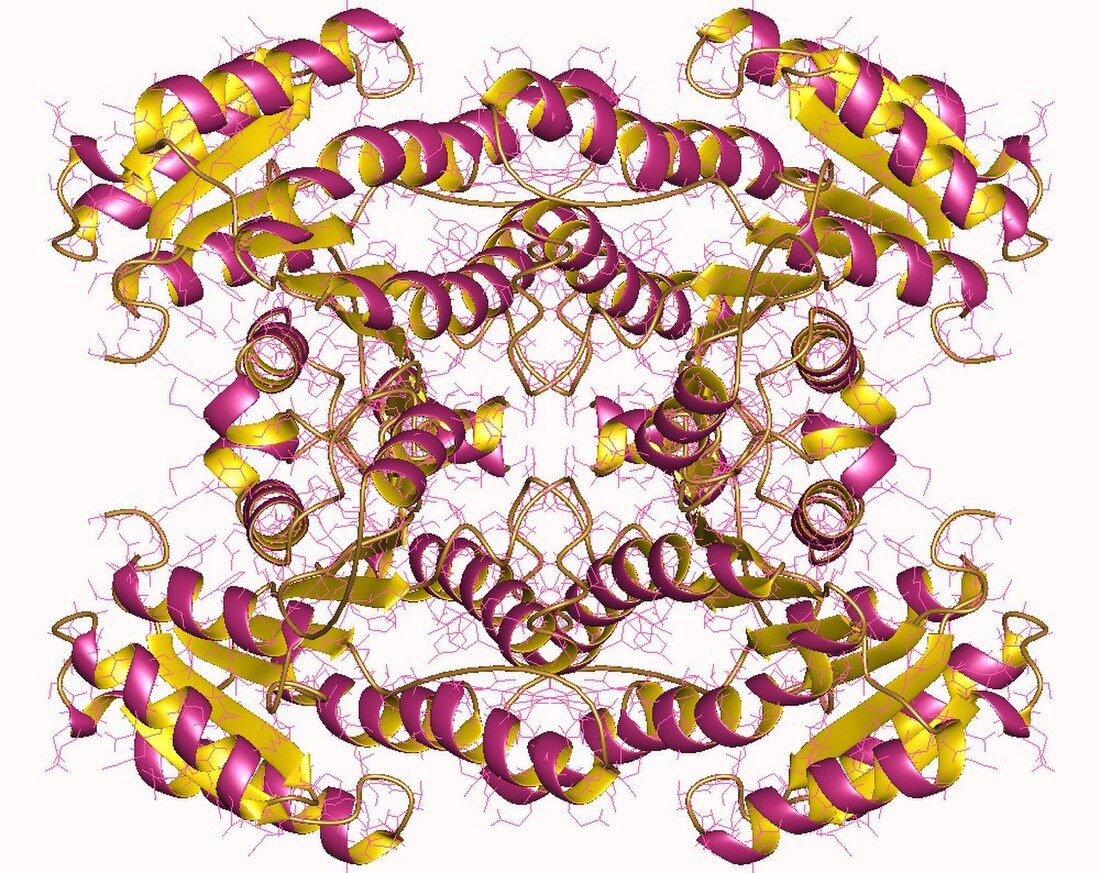Top Qs
Timeline
Chat
Perspective
Glucose 1-dehydrogenase
From Wikipedia, the free encyclopedia
Remove ads
In enzymology, a glucose 1-dehydrogenase (EC 1.1.1.47) is an enzyme that catalyzes the chemical reaction
- beta-D-glucose + NAD(P)+ D-glucono-1,5-lactone + NAD(P)H + H+
The 3 substrates of this enzyme are beta-D-glucose, NAD+, and NADP+, whereas its 4 products are D-glucono-1,5-lactone, NADH, NADPH, and H+.
This enzyme belongs to the family of oxidoreductases, specifically those acting on the CH-OH group of donor with NAD+ or NADP+ as acceptor. The systematic name of this enzyme class is beta-D-glucose:NAD(P)+ 1-oxidoreductase. Another name in common use is D-glucose dehydrogenase (NAD(P)+).
Remove ads
Structural studies
As of late 2007, 9 structures have been solved for this class of enzymes, with PDB accession codes 1G6K, 1GCO, 1GEE, 1RWB, 1SPX, 2B5V, 2B5W, 2CD9, and 2CDA.
References
Wikiwand - on
Seamless Wikipedia browsing. On steroids.
Remove ads


